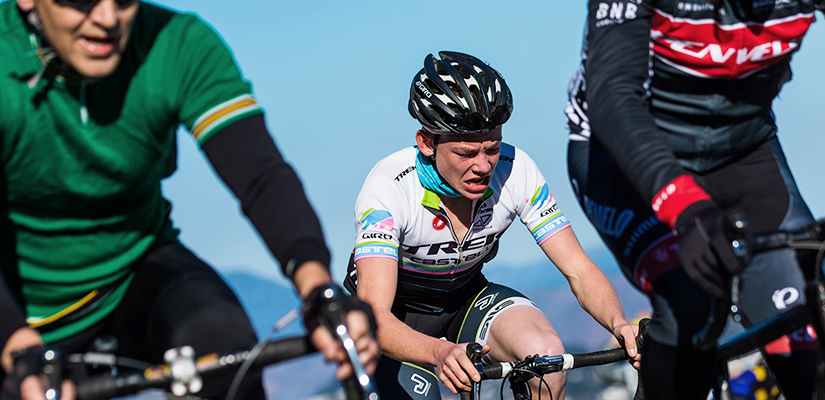How to Recognize Burnout and What to Do About It

Burnout is a common problem with serious cyclists, but recognizing burnout and differentiating it from common fatigue is necessary if your goal is to get faster. Here’s our guide to burnout — how to recognize it and what to do about it.
What Is Burnout?
Training hard makes you faster, but only when it’s structured appropriately. Every time you follow a structured workout it will push your body’s limits and cause you fatigue. Only when your plan includes adequate rest to offset that fatigue is this a good thing. As the intensity and volume of your training increases, the goal is to condition your body to be able to sustain more work. Even as you get stronger, you still need to offset that work with the right amount of rest.
When you consistently fail to get adequate rest, your fatigue will accrue and your performances will consistently decline. This type of accrued fatigue is often referred to as burnout. In many cases, these physical symptoms are accompanied by symptoms of a more psychological nature. A lack of motivation or confidence or depression commonly go hand in hand with burnout. Whether they cause or magnify burnout is a separate topic for another day.
How to Recognize Burnout From Simple Fatigue
The tricky part about burnout is that it can be easily confused with fatigue. If you perceive simple fatigue as burnout, you could very easily find yourself taking time off when you don’t need it. Not only is this unnecessary, but it will make you slower when you should be getting faster.
The best way to recognize burnout and separate it from fatigue is to use perception and data. Perception can be a liar at times, but data always acts as a constant. After a hard workout, for example, you may find yourself exhausted going into the next day’s workout and unable to complete your intervals as prescribed. Before jumping to the conclusion that you are burned out, it’s important to look at your data and give yourself a moment to reflect.
We all have bad days from time to time. If we weren’t able to recover properly after a workout, we should expect the next day’s workout to be hard. However, if you notice your resting heart rate is in a substantially elevated state and that, despite your best efforts to properly recover, you are still having difficulty completing your workouts after multiple days, then you may be experiencing burnout.
What to Do About Burnout
There are two ways to approach resolving burnout. To physically rehabilitate, you need to give your body a break from your rigorous training schedule. Whether this is accomplished by lowering the intensity or volume of your training is up to you. I personally prefer to first try reducing the volume while keeping the intensity high. This tactic is used in our taper weeks to keep your fitness sharp while increasing your freshness.
If you find this isn’t helping you get the upper hand on burnout, consider taking a short break from training — but don’t just sit on the couch. When you take this week or so off of training, use the time wisely by rediscovering your motivation. This approach addresses both the physical and psychological aspects of burnout. I personally love to go back to what I love about riding bikes. For me, that’s going on long rides in new places on my bike, going for rides with family or just spending as much time as I can on a bicycle.
The mind is a powerful thing; when you are having a tough time pulling yourself out of a slump, it’s one of the most effective tools you can use. Don’t discount how much influence your love of riding a bike can have on your performance.
Conclusion
Burnout occurs when you’ve consistently accrued fatigue without adequate recovery for an extended period of time. The psychological and physical symptoms are almost always easy to perceive, but trusting that perception alone may cause you to incorrectly identify fatigue as burnout. Doing so keeps you from reaping the intended benefits of your training plan for a period of time, when quite possibly all you needed was a good night’s rest or reduction in life stress. Using data like resting heart rate can make it easy to not make this mistake. Once you’ve identified burnout, be careful not to treat it carelessly with excessive time off or by abandoning your goals. Burnout is best treated from the perspective of getting back on track through rediscovering your motivation.
Listen to Certified Cycling Coaches Discuss Burnout
“How to Recognize Burnout and What to Do About It” is one topic we covered in episode 24 of the Ask a Cycling Coach podcast. Listen to the episode’s full recording below to hear this and other questions from cyclists get answered by our certified cycling coaches.
Additional Notes
TrainerRoad’s Ask a Cycling Coach podcast is dedicated to making you a faster cyclist. It gives you the chance to get answers to your cycling and triathlon training questions from USAC certified coaches Chad Timmerman, Jonathan Lee and special guests. Learn more about other topics we covered in the latest episode with our resources below:
- Why is my heart rate different inside and outside?
- Should I take my FTP test in my aero position?
- Power versus heart rate for cyclists
- Cross training for cyclists
- Does base training raise your FTP?
- Do all power meters measure the same?
- How much time off hurts your fitness?
- How to adjust your training plan
- How to know if you’re burned out
- Do endurance rides help burnout?
- How to train with a complicated schedule
- Are short, intense workouts best if you are limited on time?
- How to rebuild after a peak
If you have a question that you’d like to ask Coach Chad, submit your question here. We’ll do our best to answer them on the next episode of the Ask a Cycling Coach podcast.
